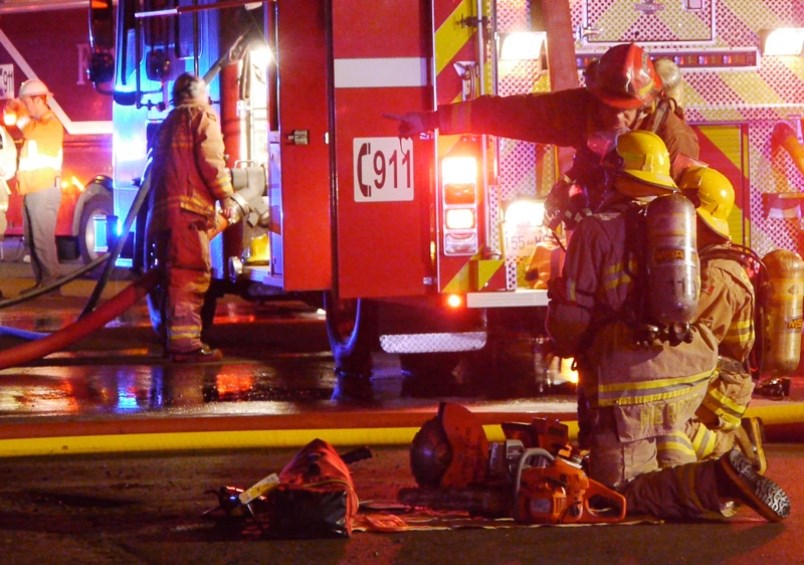Since the dawn of industrialization, some workers have had to trade their health for a paycheque. Historically in Squamish, mill and chemical plant workers, forestry and marine employees suffered physically for their pay — some paid with their lives.
But it is a secret hidden in plain sight that firefighters have put their lives at risk, not only from heading toward danger to help others involved in car accidents and fires but with a dramatically increased risk of cancer. Cancer that often doesn’t show up until later in their careers.
A recent study found, “extreme temperatures, toxic substances, strenuous physical labour, violence and other traumatic events are potential risks,” for firefighters. It also found “evidence for increased mortality from cancer among firefighters compared to the general population.”
The report states, more than eight in 10 firefighter line-of-duty deaths can be attributed to cancer.
While this may surprise lay people, it doesn’t surprise the men and women who do the job.
Squamish Fire Chief Bill Stoner said the fire service is “already keenly aware because of the co-workers and peers within our profession who have been affected by job-related cancers.”
“Every firefighter who joins the department today is made aware of this risk on day one. We take this threat seriously and focus on ensuring that all of our members are doing everything they can to reduce exposure to potential job-related cancers.”
There needs to be a provincial and national baseline surveillance system for all firefighter injuries and fatalities, as recommended in the recent report by the Centre for Public Safety and Criminal Justice Research. Currently, policies specific to firefighters rely on data of accepted workplace compensation claims, thus not all worker illnesses or injuries are included.
Without this comprehensive base review, it will be tough to know how to eliminate or further reduce the risk to the men and women who serve our community.
Meanwhile, Stoner said the Squamish force does take precautions to reduce the risks: the use of breathing apparatus and personal protective equipment, for example.
Decontamination of firefighters after events also significantly reduces exposure.
“Squamish Fire Rescue has very detailed operating guidelines, and a safety-oriented culture, which ensures that these steps are taken every time,” Stoner said.
But it is too late for many who came before more enlightened current practices.
Mayor Patricia Heintzman recalled to The Chief that during her first term on council, former municipal councillor Ray Peters died. Peters was a firefighter for years and died of throat/esophageal cancer related to his work in the fire department, Heintzman noted.
She reiterated that the department has much better practices today that help to prevent cancer, but added that it is challenging that the cancers can manifest when firefighters are retired, yet may still be related to their work.
Our culture likes to present firefighters — as well as other first responders and military personnel — as superheroes. This is dangerous for numerous reasons, not least of which is it gives a false impression that these men and women are immune to afflictions we all are vulnerable to physically and mentally.
To read the full report on firefighters go to, Determinants of Injury and Death in Canadian Firefighters: A Case for a National Firefighter Wellness Surveillance System.



